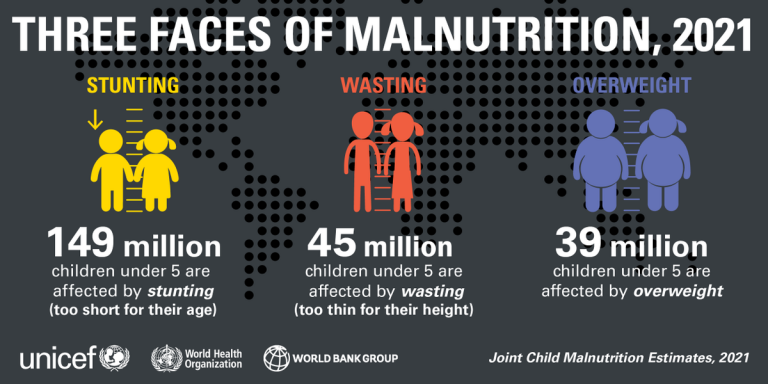
You are what you eat and what you eat is more than what you see. Food can make or break our health.
Consuming food every day might be a mundane task for many. After all, eating food is something we must do to sustain ourselves. Yet, food remains a luxury for many in the world. There are 3 billion people in the world who cannot afford a healthy diet. In 2020, 768 million people went hungry.
Hunger as a public health issue is often discussed as a structural determinant of health. It was not long before the Covid-19 pandemic became a ‘hunger pandemic‘ where almost 30% of the world became food insecure.
Hunger, simply defined, is an uncomfortable and painful human condition where individuals are unable to access and consume enough food to provide the required nourishment to the body. Hunger is the most dehumanized state of being, stripping people of dignity, mental peace, and happiness.
To fully appreciate the connection between public health and food systems, we must unlearn what we have always believed about the purpose of food. Eating food is not and should not be just for satiation. Food is supposed to nourish our bodies. Remember the 3-billion figure? That is almost 38% of the global population who are unable to buy nutritious and healthy food. There is a difference between consuming a high-calorie diet consisting of ultra-processed and high-carb food, which will make you feel full versus a diverse diet comprised of vegetables, fruits, nuts, seeds, whole grains, less-processed meat, and dairy, which will help your body to grow. Bad diets cause about 11 million deaths per year.

The lack of access to healthy, safe, and nutritious food translates into diet-related non-communicable diseases such as obesity, high blood pressure, diabetes, and dental disease. Children who do not receive enough nutritious food growing up experience health issues, including slow physical and mental growth. In 2020, 149 million children under five were stunted (low height for age) and another 45 million were wasted (low weight for height). Women (mothers and daughters) are the first to sacrifice their share of food. Women make up 60% of those affected by hunger.
Public health researchers and experts advocate for healthy diets and an active lifestyle to keep diet-related diseases at bay. But advising is not enough. And the health system often intervenes at the curative stage to treat a food-related disease rather than at a preventative stage. It is important to treat the root cause rather than just the disease. Public health needs to join hands with food systems to create an environment where all people receive their recommended nutritious diet.
Food systems comprise agriculture, nutrition, business, science — basically every stage from farm/ocean to fork. Many countries publish food-based dietary guidelines that promote the consumption of nutritious and unprocessed food. Yet, the food systems that cater to our dietary needs are not helping in that consumption pattern.
Most countries recommend their populations to consume more fruits and vegetables. Yet, the agricultural subsidies they offer tend to be the least for fruit and vegetable production. Thus most poor people in the world cannot afford to buy the recommended amounts of fruits and vegetables because they are too expensive. Instead, they opt for consuming grains such as wheat, rice, and corn that receive a lion’s share of subsidies and are hence readily available for constant consumption.
The current global food systems do not produce enough to meet human’s nutritional needs. This means that tomorrow, if everyone begins to consume vegetables, fruits, nuts, and wholegrain as recommended, we will soon run out of them.
The need for public health and food systems to work together is now greater than ever. If we want to save humanity from the curse of hunger and malnourishment, our food systems must adapt to the dietary recommendation of public health. And public health needs to amplify advocacy for healthy food production and subsidies.
There are only nine years left for the world to achieve zero hunger as laid out by Sustainable Development Goal 2 (achieve zero hunger by 2030). The urgency to win the battle against hunger and malnutrition is real. In the year 2021, the UN Food Systems Summit and the Nutrition for Growth Summit aim to raise global awareness and encourage commitments towards healthier, more sustainable, and equitable food systems.
People can make rational food choices if provided with rational options and the means to make better food choices. It is up to the food systems to make a healthy food choice an easy and affordable choice. Public health has a lot to do in ensuring the food systems are inclusive and human-centric and not profit-centric.
More from Naina Qayyum here.
HPHR.org was designed by ComputerAlly.com.
Visit HPHR’s publisher, the Boston Congress of Public Health (BCPH).
Email communications@bcph.org for more information.

Click below to make a tax-deductible donation supporting the educational initiatives of the Boston Congress of Public Health, publisher of HPHR Journal.![]()